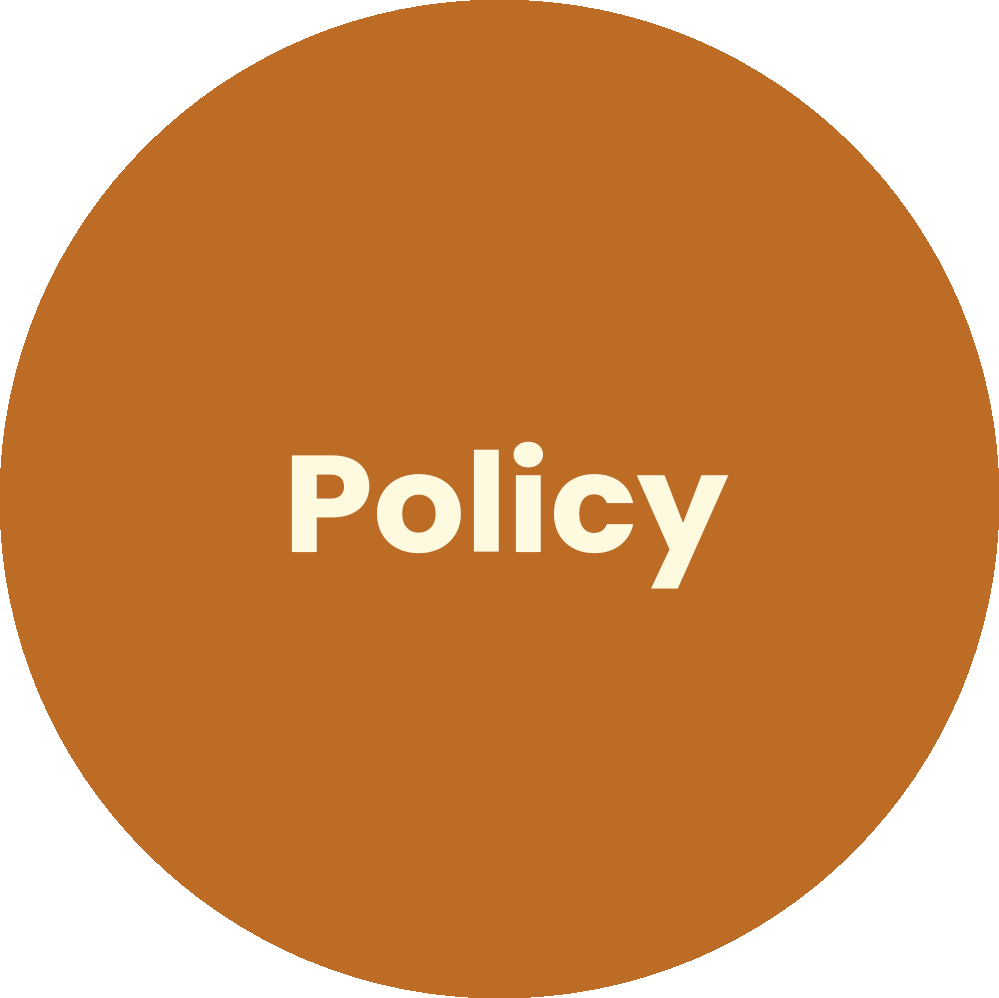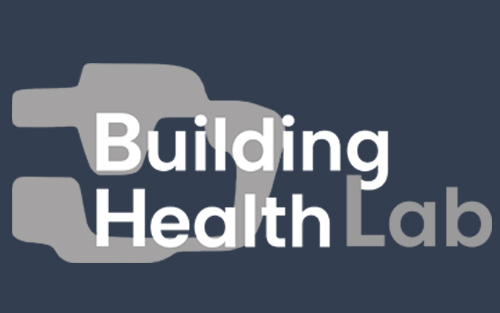
Our Evidence-based Workflow using Urban Ecosystem Indicators
We use Health and Environmental indicators to ensure our UrbanCare services and workflow are evidence-based:
- Input Indicators: Structure research protocols for site data collection on health and environmental data to identify health stressors.
- Outcome Indicators: Help align sustainable urban planning goals we use in infographics and data viewers for decision-making.
- Output Indicators: Graph best practices and solutions to support designers create green, healthy, and viable public spaces in workshops.
- Impact Indicators: Conduct reviews to update policies, adjusting approaches for future projects based on past effectiveness.

21
Research Indicators for Spatial Inequity
i. Functional Capacity
- Percentage of Population with Mobility Limitations
- Accessibility Issues Identified in Public Health Data
- Frequency of Mobility Aid Usage
- Identified Needs for Assistive Devices and Technologies
- Prevalence of Functional Limitations
ii. Physical Trauma
- Rates of Slips, Trips, and Falls
- Incidence of Pedestrian-Vehicle Collisions
- Incidence of Pedestrian-Cyclist Collisions
- Accident Rates in Crosswalks
iii. Metabolic Syndrome
- Prevalence of Obesity
- Prevalence of High Blood Pressure
- Prevalence of Dyslipidemia
- Prevalence of Insulin Resistance
- Prevalence of Inflammation
- Utilization of Preventive Healthcare Services
iv. Communicable Diseases
- Incidence Rate of Influenza
- Incidence Rate of Rhinoviruses
- Incidence Rate of Skin Infections
- Population Density
- Patterns of Social Interaction
- Adoption of Preventive Measures

9
Research Indicators for Stormwater Runoff
i. Vector-Borne Diseases
- Rates of Infection (e.g.,malaria, dengue, Zika, West Nile)
- Vector Populations (density and distribution)
- Effectiveness of Vector Control Measures
ii. Sanitation Water-Borne Illnesses
- Rates of Water-Borne Diseases (e.g., cholera, typhoid, dysentery, gastroenteritis)
- Water Quality Assessments
- Sanitation Infrastructure Quality
iii. Hygiene-Related Diseases
- Prevalence of Hygiene-Related Illnesses (e.g., diarrhea, hepatitis A, respiratory, skin, and eye infections)
- Access to and Quality of Public Hygiene Facilities
- Public Education on Hygiene Practices

17
Research Indicators for Urban Heat
i. Heat-Related Illnesses
- Emergency Department Visits and Hospital Admissions
- Deaths Attributed to Heat-Related Complications
- Incidence and Severity of Asthma and Allergies
- EMS Calls for Heat-Related Emergencies
- Daily Maximum Temperatures and Heat Index Values
- Percentage of Homes with Air Conditioning
- Access to Public Cooling Centers
ii. Cardiovascular Health
- Mortality Rates from Cardiovascular Diseases
- Hospital Admissions for Cardiovascular Events
- Prevalence of Risk Factors (high blood pressure, high cholesterol, diabetes)
- Percentage of Adults Who are Overweight or Obese
- Smoking Rates Among Adults
iii. Skin Diseases
- Rates of Skin Cancer Diagnoses
- Number of Healthcare Visits for Skin Conditions
- Sales of Sunscreen with an SPF of 15 or Higher
- Ultraviolet (UV) Index Levels
- Public Awareness of Sun Safety Practices

22
Research Indicators for Biotope Loss
i. Mental Health
- Prevalence and Incidence of Mental Health Conditions
- Suicide Rates
- Rates of Substance Use Disorders
- Utilization of Mental Health Services
- Access to Green Spaces (e.g., percentage of population with access within a certain distance)
- Usage Rates of Green Spaces
- Community Engagement Activities
- Surveys on Resident Well-being
ii. Autoimmune Diseases
- Incidence and Prevalence of Autoimmune Diseases
- Hospitalization Rates for Autoimmune Diseases
- Medication Use for Autoimmune Diseases
- Environmental Quality Indicators
- Biodiversity and Exposure to Microbial Environments
- Public Health Campaigns and Education
iii. Respiratory Illnesses
- Rates of Respiratory Conditions
- Incidence of Respiratory Infections
- Hospitalization Rates for Respiratory Illnesses
- Deaths from Respiratory Illnesses
- Absenteeism from Work or School Due to Respiratory Illness
- Air Quality Index (AQI) Measurements
- Availability and Usage of Pollution Mitigation Features
- Public Awareness and Behavior Change

27
Planning Indicators for Spatial Inequity
i. Medical Environment
- Accessibility to Medical Facilities for All Individuals
- Reduction in Accidents Due to Improved Lighting
- Safety and Accessibility at Medical Facility Entrances
ii. Health Behavior Environment Locations
- Community Engagement in Social Spaces
- Access to Healthy Food Options
- Availability of Physical Activity Facilities
- Safety and Accessibility at Health Behavior Locations
iii. Crossings
- Vehicle Speeds at Pedestrian Crossings
- Nighttime Visibility for Pedestrians
- Effectiveness of Signalization
- Use of Tactile Ground Surface Indicators
iv. Respite Areas
- Accessibility and Cleanliness of Restrooms
- Availability of Safe Drinking Water
- Usage of Public Benches
- Utilization of Shaded Rest Areas
- Effectiveness of Quiet Zones

11
Planning Indicators for Stormwater Runoff
i. Public Safety
- Flood Frequency Reduction
- Flood Response Time
- Volume of Stormwater Managed
- Overflow Event Reduction
ii. Sanitation
- Reduction in Sewage Overflows
- Treatment Capacity
- Volume of Wastewater Recycled
iii. Hygiene
- Reduction in Waterborne Diseases
- Water Quality Improvements
- Pathogen Removal Rate
- Chemical Pollutant Levels

6
Planning Indicators for Urban Heat
i. Urban Temperature Management
- Ambient Temperature Reduction
- Shade Coverage
ii. Urban Cooling System Performance
- Effectiveness of Cooling Systems
- Energy Consumption of Cooling Technologies
iii. Urban Air Quality Enhancement
- Reduction in Pollutant Levels
- Installation and Performance of Urban Air Filters

18
Planning Indicators for Biotope Loss
i. Mental Health
- Evaluate Usage Patterns of Green Areas
- Plan for Availability of Natural Recreational Areas
- Assess Stress Reduction through Urban Design
- Plan for Community Engagement Spaces
- Measure Changes in Social Cohesion and Interaction in Green Spaces
- Survey Resident Well-being in Relation to Urban Design
- Evaluate Accessibility of Green Spaces for Different Demographics (e.g., elderly, children, disabled)
ii. Autoimmune Diseases
- Plan for Urban Biodiversity
- Evaluate Soil and Environmental Microbiota
- Assess Reduction in Environmental Toxins
- Assess Exposure to Diverse Plant Species and its Impact on Immune Health
- Monitor Urban Environmental Quality Metrics
iii. Respiratory Illnesses
- Evaluate Reduction in Airborne Pollutants
- Assess Tree and Plant Coverage
- Monitor Pollen Counts
- Plan for Integration of Pollution Mitigation Features
- Assess Impact of Green Roofs and Walls on Local Air Quality
- Evaluate Public Health Awareness and Behavior Change

15
Design Indicators for Spatial Inequity
i. Medical Environment
- Installation of Adequate Lighting at Medical Facilities
- Compliance of Ramps and Entrances with Accessibility Standards
- Creation of Clear Visibility Zones at Entrances
ii. Health Behavior Environment Locations
- Implementation of Barrier-free Entrances
- Development of Well-lit Pathways
- Marking of Physical Activity Zones
iii. Crossings
- Construction of Raised Crosswalks
- Use of Reflective Materials at Crosswalks
- Installation of Pedestrian Signals
- Addition of Tactile Indicators at Crosswalks
iv. Respite Areas
- Design of Accessible Restrooms
- Installation of Drinking Fountains
- Placement of Weather-resistant Benches
- Design of Shaded Rest Areas
- Creation of Quiet Zones

11
Design Indicators for Stormwater Runoff
i. Public Safety
- Construction of Hydraulic Infrastructure (detention basins, redesigned waterways)
- Installation of Efficient Flood Management Systems
- Expansion of Stormwater Management Capacity
- Implementation of Overflow Prevention Systems
ii. Sanitation
- Upgrade of Sewage Systems
- Enhancement of Wastewater Treatment Capacity
- Development of Wastewater Recycling Systems
iii. Hygiene
- Improvement of Water Treatment Systems
- Installation of Advanced Water Filtration Systems
- Expansion of Pathogen Removal Technologies
- Implementation of Chemical Pollutant Monitoring

6
Design Indicators for Urban Heat
i. Urban Temperature Management
- Implementation of Reflective Pavements and High-Albedo Materials
- Installation of Engineered Shade Structures
ii. Urban Cooling System Performance
- Deployment of Active Cooling Systems (misting systems, cooled public seating areas)
- Installation of Energy-Efficient Cooling Technologies
iii. Urban Air Quality Enhancement
- Implementation of Urban Particle Trapping and Processing Measures
- Installation and Performance of Urban Air Filters

10
Design Indicators for Biotope Loss
i. Mental Health
- Design and Maintain Green Spaces
- Implement Community Engagement Programs through Urban Design
- Develop Recreational Areas in Urban Spaces
ii. Autoimmune Diseases
- Design for Preservation of Natural Habitats
- Integrate Biodiversity in Urban Planning
- Implement Pollution Control Measures through Urban Design
iii. Respiratory Illnesses
- Increase Tree Canopy and Vegetative Cover through Urban Design
- Install Green Roofs and Vertical Gardens
- Deploy Air Quality Improvement Technologies
- Monitor and Control Pollen Levels

12
Policy Indicators for Spatial Inequity
i. Long-term Health Improvements
- Reduction in Chronic Disease Rates
- Decrease in Communicable Disease Incidence
ii. Safety and Accessibility Enhancements
- Reduction in Accident and Injury Rates
- Improvements in Functional Capacity
iii. Behavioral and Lifestyle Changes
- Increase in Physical Activity Levels
- Improved Utilization of Public Spaces
iv. Environmental and Social Impact
- Enhancement of Social Cohesion
- Mitigation of Urban Heat Island Effect
v. Public Transport and Infrastructure Utilization
- Increase in Public Transport Ridership
- Improvement in Pedestrian Traffic Flow
vi. Cultural and Aesthetic Enhancements
- Increase in Community Satisfaction
- Boost in Tourism and Local Business

7
Policy Indicators for Stormwater Runoff
i. Vector-Borne Diseases
- Reduction in Infection Rates (e.g., 30% decrease in dengue incidence)
- Decrease in Vector Populations (e.g., 40% reduction in mosquito density)
ii. Sanitation Water-Borne Illnesses
- Reduction in Water-Borne Disease Rates (e.g., 25% reduction in cholera cases)
- Improvement in Water Quality (e.g., 90% of water sources meeting health standards)
- Enhanced Sanitation Infrastructure (e.g., 60% reduction in sewage overflow incidents)
iii. Hygiene-Related Diseases
- Decrease in Prevalence of Hygiene-Related Illnesses (e.g., 20% decrease in diarrhea and hepatitis A)
- Increased Access to and Quality of Hygiene Facilities (e.g., 95% of public spaces with handwashing stations)

7
Policy Indicators for Urban Heat
i. Heat-Related Illnesses
- Reduction in Heat-Related Emergency Visits and Hospital Admissions (e.g., 20% decrease in heat stroke admissions)
- Decrease in Heat-Related Mortality Rates (e.g., 15% reduction in heat-related deaths)
ii. Cardiovascular Health
- Improvement in Cardiovascular Health Metrics (e.g., 10% reduction in heart attack admissions during heatwaves)
- Reduction in Cardiovascular Mortality Rates (e.g., 5% decrease in deaths due to heart-related events during heatwaves)
iii. Skin Diseases
- Reduction in Skin Cancer Rates (e.g., 10% decrease in new diagnoses)
- Decrease in Healthcare Visits for Skin Conditions (e.g., 15% reduction in visits for sunburn)
- Increase in Public Awareness and Protective Behaviors (e.g., 20% increase in sunscreen use)

11
Policy Indicators for Biotope Loss
i. Mental Health
- Reduction in Mental Health Conditions (e.g., 15% decrease in anxiety rates)
- Decrease in Suicide Rates (e.g., 10% reduction)
- Improvement in Substance Use Disorder Rates (e.g., 20% reduction in alcohol use)
- Increased Utilization of Mental Health Services (e.g., 25% increase in therapy sessions)
ii. Autoimmune Diseases
- Reduction in Autoimmune Disease Rates (e.g., 10% decrease in new cases)
- Decrease in Hospitalization Rates for Autoimmune Diseases (e.g., 15% reduction)
- Improvement in Environmental Quality (e.g., 20% reduction in pollutant levels)
iii. Respiratory Illnesses
- Reduction in Respiratory Illnesses (e.g., 20% decrease in asthma rates)
- Decrease in Respiratory Infection Rates (e.g., 15% reduction in common cold cases)
- Improvement in Air Quality Index (e.g., 25% improvement in AQI)
- Increased Usage of Pollution Mitigation Features (e.g., 30% increase in green roof installations)

21
Research Indicators for Spatial Inequity
i. Functional Capacity
- Percentage of Population with Mobility Limitations
- Accessibility Issues Identified in Public Health Data
- Frequency of Mobility Aid Usage
- Identified Needs for Assistive Devices and Technologies
- Prevalence of Functional Limitations
ii. Physical Trauma
- Rates of Slips, Trips, and Falls
- Incidence of Pedestrian-Vehicle Collisions
- Incidence of Pedestrian-Cyclist Collisions
- Accident Rates in Crosswalks
iii. Metabolic Syndrome
- Prevalence of Obesity
- Prevalence of High Blood Pressure
- Prevalence of Dyslipidemia
- Prevalence of Insulin Resistance
- Prevalence of Inflammation
- Utilization of Preventive Healthcare Services
iv. Communicable Diseases
- Incidence Rate of Influenza
- Incidence Rate of Rhinoviruses
- Incidence Rate of Skin Infections
- Population Density
- Patterns of Social Interaction
- Adoption of Preventive Measures

27
Planning Indicators for Spatial Inequity
i. Medical Environment
- Accessibility to Medical Facilities for All Individuals
- Reduction in Accidents Due to Improved Lighting
- Safety and Accessibility at Medical Facility Entrances
ii. Health Behavior Environment Locations
- Community Engagement in Social Spaces
- Access to Healthy Food Options
- Availability of Physical Activity Facilities
- Safety and Accessibility at Health Behavior Locations
iii. Crossings
- Vehicle Speeds at Pedestrian Crossings
- Nighttime Visibility for Pedestrians
- Effectiveness of Signalization
- Use of Tactile Ground Surface Indicators
iv. Respite Areas
- Accessibility and Cleanliness of Restrooms
- Availability of Safe Drinking Water
- Usage of Public Benches
- Utilization of Shaded Rest Areas
- Effectiveness of Quiet Zones

15
Design Indicators for Spatial Inequity
i. Medical Environment
- Installation of Adequate Lighting at Medical Facilities
- Compliance of Ramps and Entrances with Accessibility Standards
- Creation of Clear Visibility Zones at Entrances
ii. Health Behavior Environment Locations
- Implementation of Barrier-free Entrances
- Development of Well-lit Pathways
- Marking of Physical Activity Zones
iii. Crossings
- Construction of Raised Crosswalks
- Use of Reflective Materials at Crosswalks
- Installation of Pedestrian Signals
- Addition of Tactile Indicators at Crosswalks
iv. Respite Areas
- Design of Accessible Restrooms
- Installation of Drinking Fountains
- Placement of Weather-resistant Benches
- Design of Shaded Rest Areas
- Creation of Quiet Zones

12
Policy Indicators for Spatial Inequity
i. Long-term Health Improvements
- Reduction in Chronic Disease Rates
- Decrease in Communicable Disease Incidence
ii. Safety and Accessibility Enhancements
- Reduction in Accident and Injury Rates
- Improvements in Functional Capacity
iii. Behavioral and Lifestyle Changes
- Increase in Physical Activity Levels
- Improved Utilization of Public Spaces
iv. Environmental and Social Impact
- Enhancement of Social Cohesion
- Mitigation of Urban Heat Island Effect
v. Public Transport and Infrastructure Utilization
- Increase in Public Transport Ridership
- Improvement in Pedestrian Traffic Flow
vi. Cultural and Aesthetic Enhancements
- Increase in Community Satisfaction
- Boost in Tourism and Local Business

17
Research Indicators for Urban Heat
i. Heat-Related Illnesses
- Emergency Department Visits and Hospital Admissions
- Deaths Attributed to Heat-Related Complications
- Incidence and Severity of Asthma and Allergies
- EMS Calls for Heat-Related Emergencies
- Daily Maximum Temperatures and Heat Index Values
- Percentage of Homes with Air Conditioning
- Access to Public Cooling Centers
ii. Cardiovascular Health
- Mortality Rates from Cardiovascular Diseases
- Hospital Admissions for Cardiovascular Events
- Prevalence of Risk Factors (high blood pressure, high cholesterol, diabetes)
- Percentage of Adults Who are Overweight or Obese
- Smoking Rates Among Adults
iii. Skin Diseases
- Rates of Skin Cancer Diagnoses
- Number of Healthcare Visits for Skin Conditions
- Sales of Sunscreen with an SPF of 15 or Higher
- Ultraviolet (UV) Index Levels
- Public Awareness of Sun Safety Practices

6
Planning Indicators for Urban Heat
i. Urban Temperature Management
- Ambient Temperature Reduction
- Shade Coverage
ii. Urban Cooling System Performance
- Effectiveness of Cooling Systems
- Energy Consumption of Cooling Technologies
iii. Urban Air Quality Enhancement
- Reduction in Pollutant Levels
- Installation and Performance of Urban Air Filters

6
Design Indicators for Urban Heat
i. Urban Temperature Management
- Implementation of Reflective Pavements and High-Albedo Materials
- Installation of Engineered Shade Structures
ii. Urban Cooling System Performance
- Deployment of Active Cooling Systems (misting systems, cooled public seating areas)
- Installation of Energy-Efficient Cooling Technologies
iii. Urban Air Quality Enhancement
- Implementation of Urban Particle Trapping and Processing Measures
- Installation and Performance of Urban Air Filters

7
Policy Indicators for Urban Heat
i. Heat-Related Illnesses
- Reduction in Heat-Related Emergency Visits and Hospital Admissions (e.g., 20% decrease in heat stroke admissions)
- Decrease in Heat-Related Mortality Rates (e.g., 15% reduction in heat-related deaths)
ii. Cardiovascular Health
- Improvement in Cardiovascular Health Metrics (e.g., 10% reduction in heart attack admissions during heatwaves)
- Reduction in Cardiovascular Mortality Rates (e.g., 5% decrease in deaths due to heart-related events during heatwaves)
iii. Skin Diseases
- Reduction in Skin Cancer Rates (e.g., 10% decrease in new diagnoses)
- Decrease in Healthcare Visits for Skin Conditions (e.g., 15% reduction in visits for sunburn)
- Increase in Public Awareness and Protective Behaviors (e.g., 20% increase in sunscreen use)

9
Research Indicators for Stormwater Runoff
i. Vector-Borne Diseases
- Rates of Infection (e.g.,malaria, dengue, Zika, West Nile)
- Vector Populations (density and distribution)
- Effectiveness of Vector Control Measures
ii. Sanitation Water-Borne Illnesses
- Rates of Water-Borne Diseases (e.g., cholera, typhoid, dysentery, gastroenteritis)
- Water Quality Assessments
- Sanitation Infrastructure Quality
iii. Hygiene-Related Diseases
- Prevalence of Hygiene-Related Illnesses (e.g., diarrhea, hepatitis A, respiratory, skin, and eye infections)
- Access to and Quality of Public Hygiene Facilities
- Public Education on Hygiene Practices

11
Planning Indicators for Stormwater Runoff
i. Public Safety
- Flood Frequency Reduction
- Flood Response Time
- Volume of Stormwater Managed
- Overflow Event Reduction
ii. Sanitation
- Reduction in Sewage Overflows
- Treatment Capacity
- Volume of Wastewater Recycled
iii. Hygiene
- Reduction in Waterborne Diseases
- Water Quality Improvements
- Pathogen Removal Rate
- Chemical Pollutant Levels

11
Design Indicators for Stormwater Runoff
i. Public Safety
- Construction of Hydraulic Infrastructure (detention basins, redesigned waterways)
- Installation of Efficient Flood Management Systems
- Expansion of Stormwater Management Capacity
- Implementation of Overflow Prevention Systems
ii. Sanitation
- Upgrade of Sewage Systems
- Enhancement of Wastewater Treatment Capacity
- Development of Wastewater Recycling Systems
iii. Hygiene
- Improvement of Water Treatment Systems
- Installation of Advanced Water Filtration Systems
- Expansion of Pathogen Removal Technologies
- Implementation of Chemical Pollutant Monitoring

7
Policy Indicators for Stormwater Runoff
i. Vector-Borne Diseases
- Reduction in Infection Rates (e.g., 30% decrease in dengue incidence)
- Decrease in Vector Populations (e.g., 40% reduction in mosquito density)
ii. Sanitation Water-Borne Illnesses
- Reduction in Water-Borne Disease Rates (e.g., 25% reduction in cholera cases)
- Improvement in Water Quality (e.g., 90% of water sources meeting health standards)
- Enhanced Sanitation Infrastructure (e.g., 60% reduction in sewage overflow incidents)
iii. Hygiene-Related Diseases
- Decrease in Prevalence of Hygiene-Related Illnesses (e.g., 20% decrease in diarrhea and hepatitis A)
- Increased Access to and Quality of Hygiene Facilities (e.g., 95% of public spaces with handwashing stations)

22
Research Indicators for Biotope Loss
i. Mental Health
- Prevalence and Incidence of Mental Health Conditions
- Suicide Rates
- Rates of Substance Use Disorders
- Utilization of Mental Health Services
- Access to Green Spaces (e.g., percentage of population with access within a certain distance)
- Usage Rates of Green Spaces
- Community Engagement Activities
- Surveys on Resident Well-being
ii. Autoimmune Diseases
- Incidence and Prevalence of Autoimmune Diseases
- Hospitalization Rates for Autoimmune Diseases
- Medication Use for Autoimmune Diseases
- Environmental Quality Indicators
- Biodiversity and Exposure to Microbial Environments
- Public Health Campaigns and Education
iii. Respiratory Illnesses
- Rates of Respiratory Conditions
- Incidence of Respiratory Infections
- Hospitalization Rates for Respiratory Illnesses
- Deaths from Respiratory Illnesses
- Absenteeism from Work or School Due to Respiratory Illness
- Air Quality Index (AQI) Measurements
- Availability and Usage of Pollution Mitigation Features
- Public Awareness and Behavior Change

18
Planning Indicators for Biotope Loss
i. Mental Health
- Evaluate Usage Patterns of Green Areas
- Plan for Availability of Natural Recreational Areas
- Assess Stress Reduction through Urban Design
- Plan for Community Engagement Spaces
- Measure Changes in Social Cohesion and Interaction in Green Spaces
- Survey Resident Well-being in Relation to Urban Design
- Evaluate Accessibility of Green Spaces for Different Demographics (e.g., elderly, children, disabled)
ii. Autoimmune Diseases
- Plan for Urban Biodiversity
- Evaluate Soil and Environmental Microbiota
- Assess Reduction in Environmental Toxins
- Assess Exposure to Diverse Plant Species and its Impact on Immune Health
- Monitor Urban Environmental Quality Metrics
iii. Respiratory Illnesses
- Evaluate Reduction in Airborne Pollutants
- Assess Tree and Plant Coverage
- Monitor Pollen Counts
- Plan for Integration of Pollution Mitigation Features
- Assess Impact of Green Roofs and Walls on Local Air Quality
- Evaluate Public Health Awareness and Behavior Change

10
Design Indicators for Biotope Loss
i. Mental Health
- Design and Maintain Green Spaces
- Implement Community Engagement Programs through Urban Design
- Develop Recreational Areas in Urban Spaces
ii. Autoimmune Diseases
- Design for Preservation of Natural Habitats
- Integrate Biodiversity in Urban Planning
- Implement Pollution Control Measures through Urban Design
iii. Respiratory Illnesses
- Increase Tree Canopy and Vegetative Cover through Urban Design
- Install Green Roofs and Vertical Gardens
- Deploy Air Quality Improvement Technologies
- Monitor and Control Pollen Levels

11
Policy Indicators for Biotope Loss
i. Mental Health
- Reduction in Mental Health Conditions (e.g., 15% decrease in anxiety rates)
- Decrease in Suicide Rates (e.g., 10% reduction)
- Improvement in Substance Use Disorder Rates (e.g., 20% reduction in alcohol use)
- Increased Utilization of Mental Health Services (e.g., 25% increase in therapy sessions)
ii. Autoimmune Diseases
- Reduction in Autoimmune Disease Rates (e.g., 10% decrease in new cases)
- Decrease in Hospitalization Rates for Autoimmune Diseases (e.g., 15% reduction)
- Improvement in Environmental Quality (e.g., 20% reduction in pollutant levels)
iii. Respiratory Illnesses
- Reduction in Respiratory Illnesses (e.g., 20% decrease in asthma rates)
- Decrease in Respiratory Infection Rates (e.g., 15% reduction in common cold cases)
- Improvement in Air Quality Index (e.g., 25% improvement in AQI)
- Increased Usage of Pollution Mitigation Features (e.g., 30% increase in green roof installations)
The UrbanCare project cycle focuses on improving public health through urban spatial interventions. Central to this cycle are Ecosystem Indicators, which collect and analyze local data on population health and related environmental stressors and threats such as spatial inequity, stormwater runoff, urban heat, and biotope loss. These insights guide our four urban development phases, ensuring each phase is informed by high-quality, context-specific data.
- Public Health Research (69 input indicators)
- Urban Planning (62 outcome indicators)
- Urban Design (58 output indicators)
- Policy Reformulation (37 impact indicators)
© 2024 Alvaro Valera Sosa, BHL Building Health Lab. All rights reserved.
Valera Sosa, A. (2024). UrbanCare Indicators. BHL Building Health Lab.
The UrbanCare Indicators, developed by Alvaro Valera Sosa, are the intellectual property of BHL Building Health Lab. Unauthorized reproduction, distribution, or use of these indicators, in whole or in part, without explicit written permission from the author, is strictly prohibited. For permissions and other inquiries, please contact [email protected].



